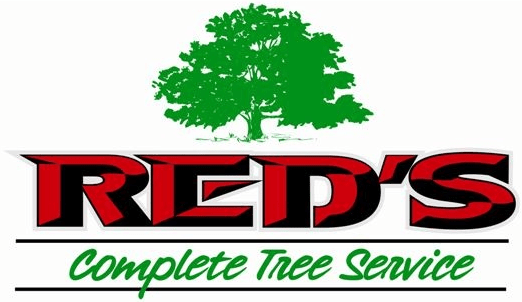What do plants need most to survive? Light, check. Water, most definitely. Nutrients, without question. But we don’t simply want our plants to survive. We want to go beyond that. We want them to ascend to glorious heights! To make plants healthier, stronger, and more resilient, we need fertilizer. However, not all fertilizers are created equal. As any green thumb can tell you, you’ve got to screen your fertilizers carefully. Do your research, and talk with one of the experts at Red’s Tree Service in Memphis. Just like there are different kinds of fertilizers, there are also different methods of fertilization. For example, you can apply fertilizer on the surface. Or, you can dig a bit deeper. If you’ve ever wondered, “what is deep root fertilization,” our team is here to guide you through it.
Fertilizer: Composition and Purpose
If you want to get technical, fertilizer can be just about anything you put on a plant to give it essential nutrients. The fertilizer’s purpose is to make sure that plants get what they need. The quicker and more efficiently plants get this kind of nourishment, the better off they will be. But, there are different kinds of fertilizer and they have diverse effects on vegetation.
Synthetic Fertilizers
Some fertilizers are made in factories. They are engineered by scientists to produce the greatest possible results. Certain chemical compounds produce a variety of results for plants. We call these synthetic fertilizers i.e. they are manufactured by human beings. Many common elements of fertilizers are derived from petroleum products. A quick list includes substances like:
- Potassium sulfate
- Ammonium nitrate
- Superphosphate
- Ammonium phosphate
Natural Fertilizers
Whereas synthetic fertilizers are inorganic compounds – made from nonliving materials – natural fertilizers are organic. That means they contain living matter. Even if that living matter is no longer living, as with compost, it is still classified as organic material. Just like the name suggests, natural fertilizers are made by the earth rather than by people. Natural fertilizers include:
- Compost
- Worm castings
- Animal fecal matter (guano or manure)
- Seaweed
- Blood meal
- Bone meal

What About Deep Root Fertilizer?
Humans need 3 essential macronutrients to live. Any balanced diet for a person should feature some combination of protein, fat, and carbohydrate. Plants need macronutrients to live too. But theirs are a bit different than ours. Plants live off of phosphorus, nitrogen, and potassium.
Just as different diet plans impact our nutrition, manipulating these plant macronutrients can enhance or hinder their growth as well. For human physiology to create new tissue (muscle, bone, skin, blood), we must keep taking in those 3 macronutrients by eating. Similarly, plants need potassium, nitrogen, and phosphorus in order to produce new tissue and grow taller, larger, or deeper.
Deep root fertilization does this to restore and renew damaged or worn down trees. Like humans, trees can be injured. They are subject to the elements, disasters, extreme weather, pests, and infections. To prevent further depreciation, deep root fertilization uses a pressurized system to drive nutrients into the organic matter and dirt around your tree and its roots.
Why Do Plants Need Deep Root Fertilization?
Remember that the human body suffers if it lacks the macronutrients it needs. Too little protein can result in weakness and fatigue. A lack of fat can cause dry rashes, a compromised immune system, or heart problems. Curtailing carbohydrates leads to hypoglycemia, a severe drop in blood sugar. Similar to humans, plants deficient in macronutrients experience harrowing health issues.
For a tree, a decrease in calcium can produce stalled or deformed leaves. A scant amount of potassium results in a yellow discoloration in the leaves (sort of like jaundice). If your tree has an inadequate level of carbon dioxide, you might observe “dieback.” Dieback is a process that kills outgrowths from a branch (leaves, twigs, shoots) and it can extend into the entire tree.
Why Can’t I Just Fertilize On My Own?
Surface fertilizers are a must for any landscaper. However, it often provides only a meager solution to the kinds of problems described above. Deep root fertilization injects the macronutrients that a tree needs directly into the soil surrounding the roots. Consequently, deep root fertilization can help trees rebound from illnesses faster than surface fertilization. Deep root fertilization works quicker to help bring trees back to optimal health.
Also, remember that surface fertilizers can easily be impacted by climate and weather conditions. Wind, rain, snow, ice, and animal activity can all impair surface fertilization. Likewise, the best fertilizer in the world will only work if it makes it into the root of a tree. Applying it from the top doesn’t guarantee that it will seep low enough into the soil to make it to the root.
When Should I Begin Deep Root Fertilization?
The short answer? Immediately! If you’re determined to supplement and develop your trees to the best they can be, you should start straight away. That said, examine your trees closely to see if they could benefit from deep root fertilization. Look for signs like slowed growth, faded or yellow leaves, leaves falling out of season, dieback, or deadfall.
Besides, the autumn season is now in full swing. Red’s Tree Service has found that autumn is the best time of year for deep root fertilization. Arranging it now will have your trees ready when spring arrives.

Ready To Schedule? Get in Touch with Red’s Now!
Still have questions about how deep root fertilization can help you? Go here for more information. Contact a Red’s Tree Service expert here.
